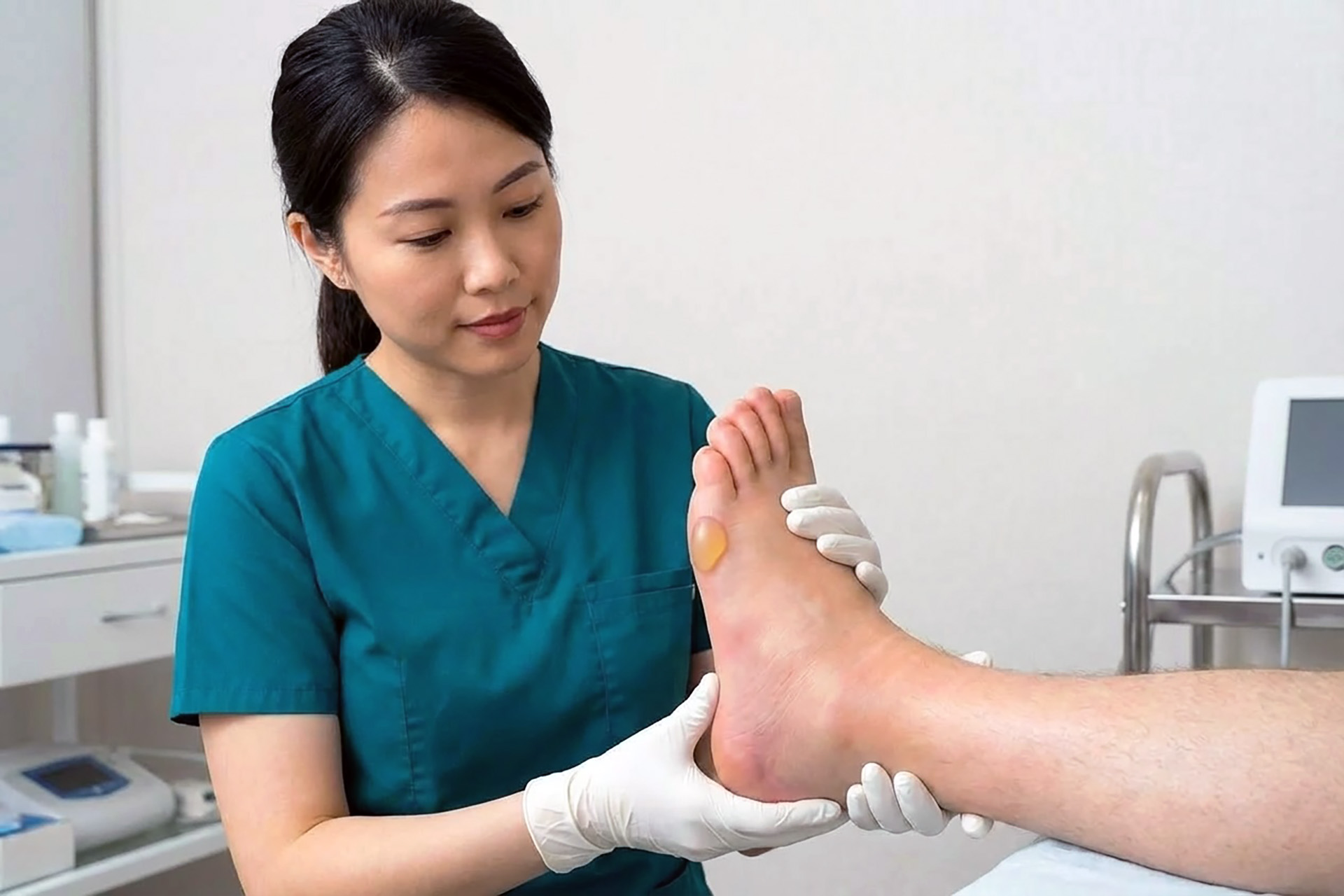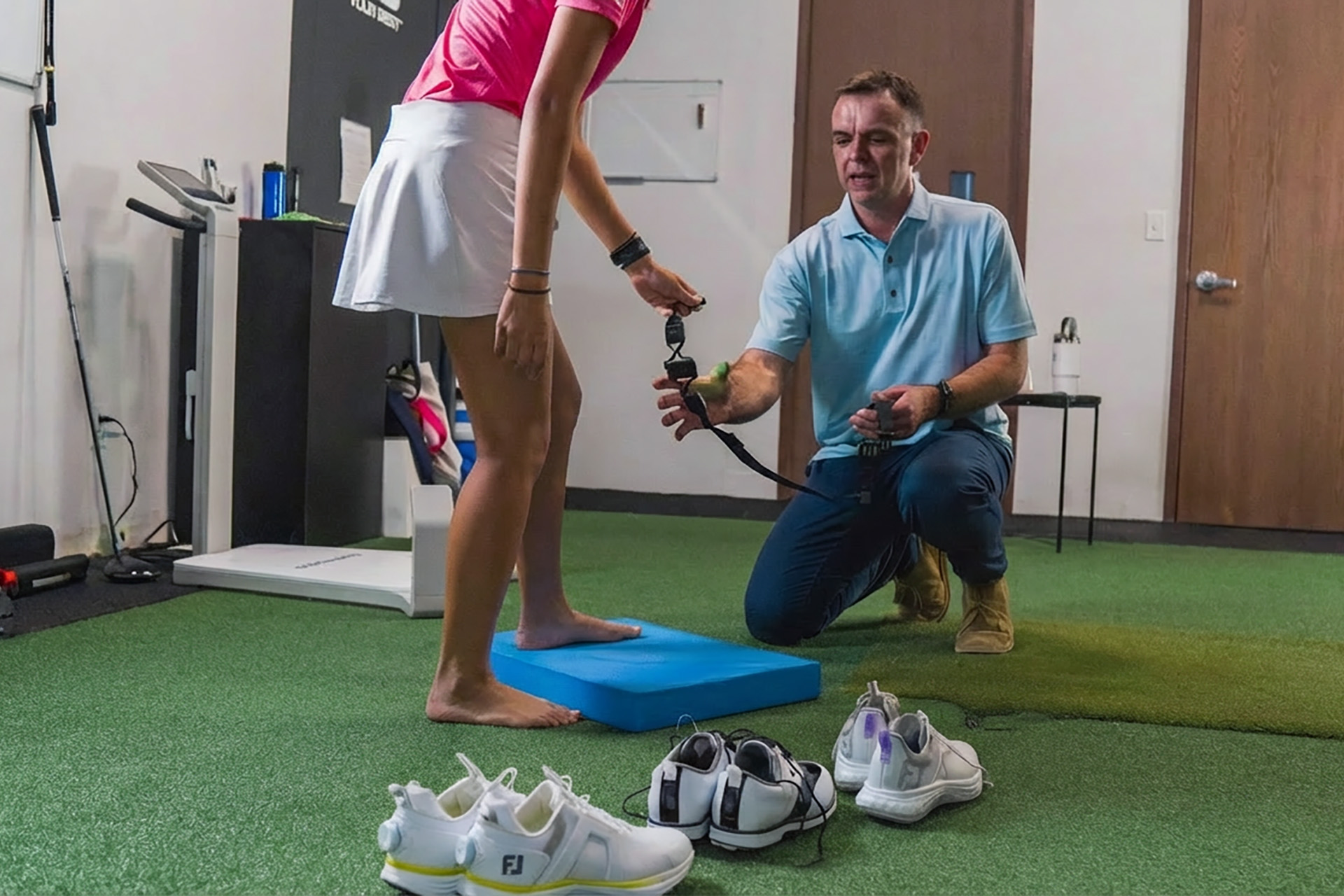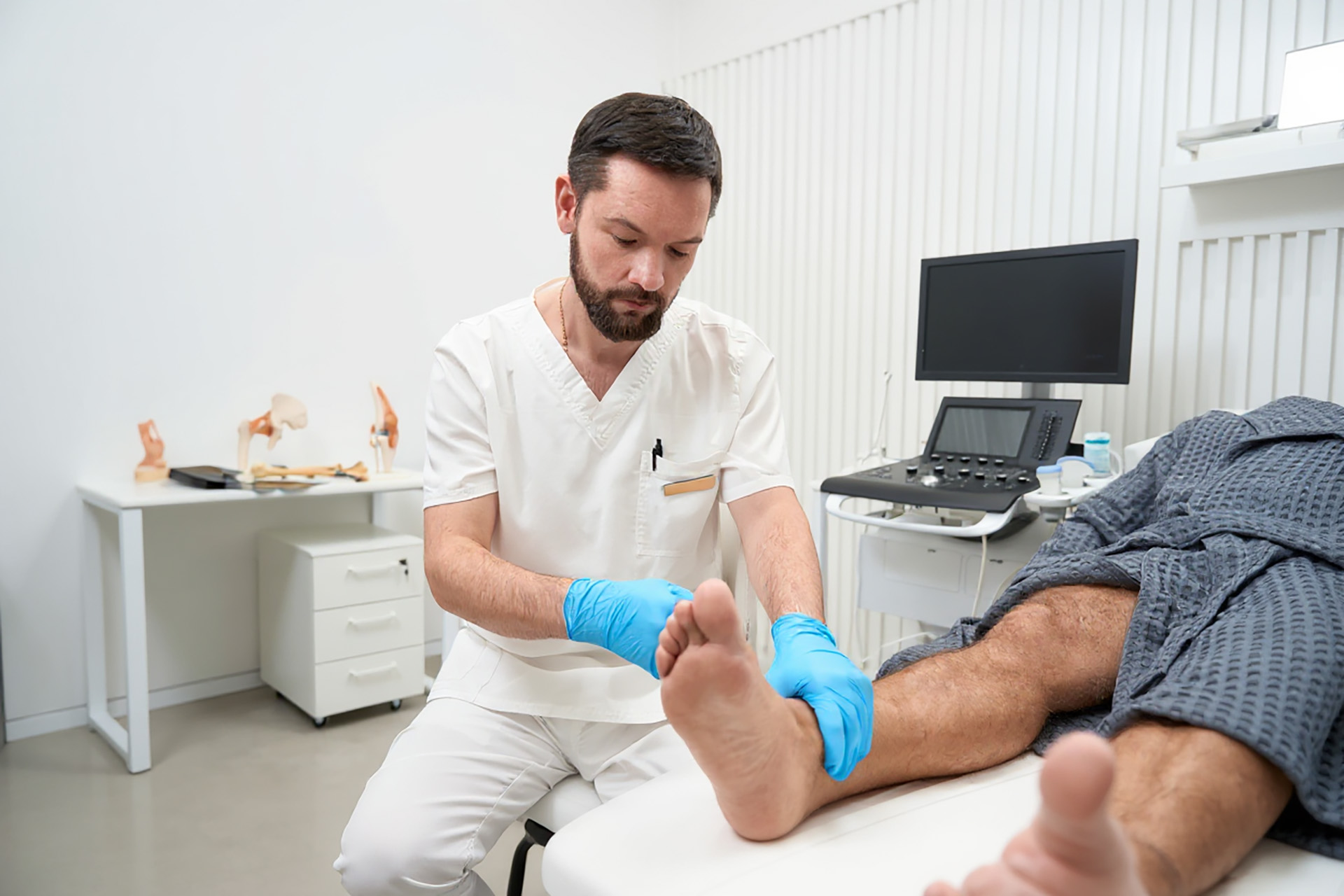What Is a Plantar Plate Tear?
A plantar plate tear is a rupture or injury to the thick ligament under the ball of the foot, most commonly affecting the second toe. This can cause pain, swelling, and potential toe deformity, such as splaying or ‘floating’.
Think of the plantar plate as a tough, rubbery cushion that sits under the ball of your foot and holds each toe firmly in place, like a seatbelt for your toe joint. This network is only about the thickness of a credit card, yet it prevents your toe from wobbling or drifting upward when you walk or run.
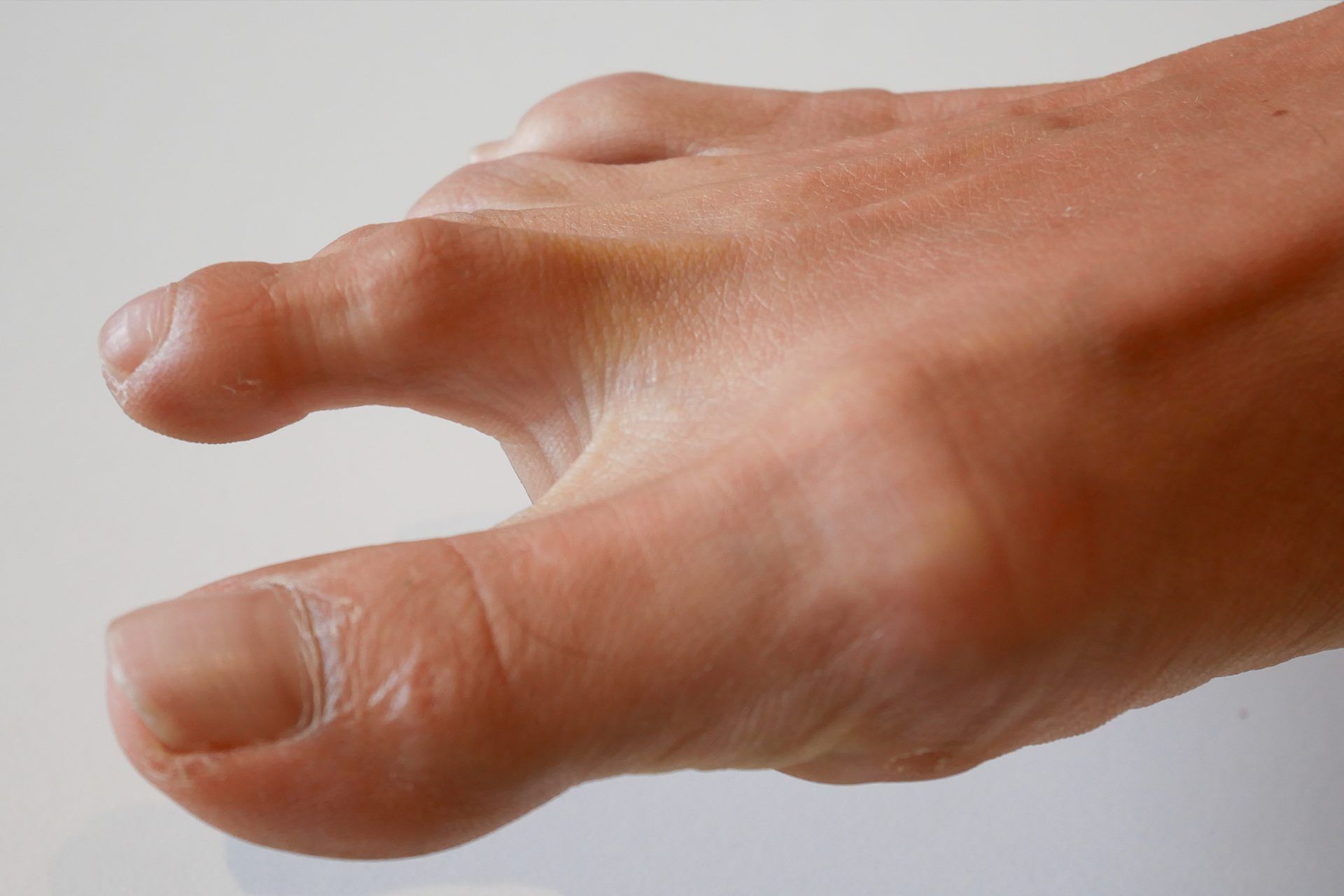
Plantar plate tears occur because of too much repeated bending at the toe joint, from running, tight or super-flexible shoes, high heels, flat feet that roll inwards, or simply having a slightly longer second toe (known as Morton’s toe) that takes extra load every step.
Plantar plate injuries can affect individuals of all age groups and genders. When that little cushion gets overstretched or torn (usually under the second toe, which takes the most punishment during movement), the toe joint becomes loose.
Thankfully, there are plantar plate tear treatment options and intervention strategies that a specialised podiatrist can offer you.
Plantar Plate Tear Stages & Symptoms
Podiatrists and doctors use grading systems to describe the severity of a plantar plate tear. Here’s a simple breakdown so you can see where your plantar plate tear symptoms may fit:
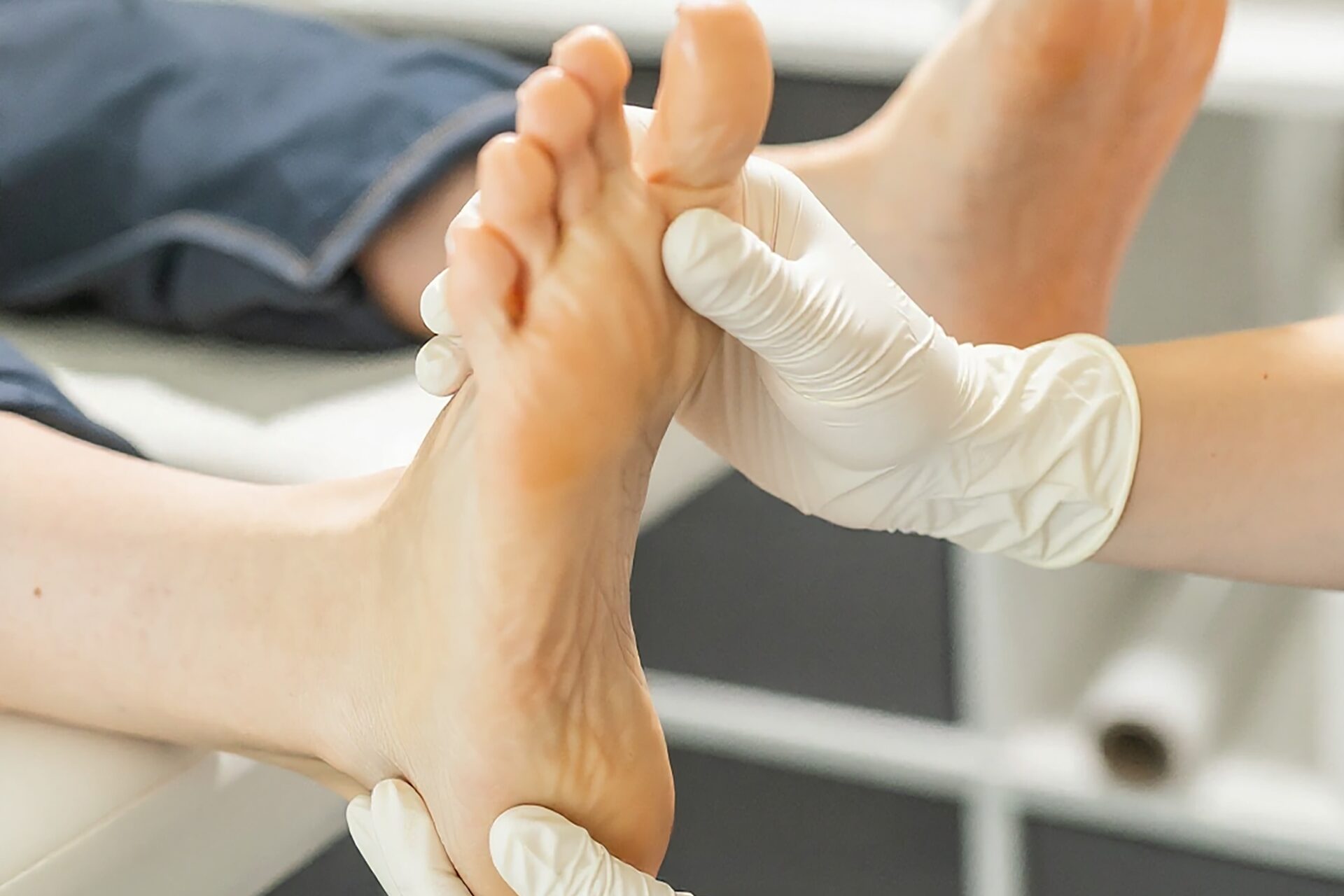
| Stage/Grade | What’s happening inside | Typical symptoms you’ll notice | Common causes/triggers |
| Grade 0 (pre-tear) | Mild stretching, no actual tear | Occasional ache under the ball of the foot, slight swelling after long days on your feet | Overpronation, flexible shoes, sudden increase in walking/running |
| Grade 1 | Small partial tear or inflammation | Pain under the toe when pushing off when walking, mild swelling, toe feels a bit ‘loose’ | Repetitive bending (hills, high heels, long second toe) |
| Grade 2 | Larger tear, some joint looseness | Noticeable swelling, toe starts lifting slightly (‘floating toe’), pain on tiptoe or barefoot | Continuous overload, calf tightness, flat or high-arched feet |
| Grade 3 | Major tear, toe drifts sideways or crosses over neighbour | Apparent toe misalignment, constant ache, feeling of walking on a pebble | Untreated Grade 2 plantar plate tear, bunions, years of improper footwear |
| Grade 4 | Complete rupture + full dislocation | Toe sits on top of its neighbour, severe pain, possible hammertoe | Long-standing injury, failed conservative treatment |
(Adapted from the Thompson & Hamilton and Yu & Judge classifications most podiatrists and surgeons use.)
The surprising fact is that studies have shown that around 35% of those undergoing foot surgery already have some degree of plantar plate damage, without any noticeable symptoms. However, once pain starts, up to 80% of long-term ball-of-foot pain cases are a result of a torn plantar plate, especially under the second toe. Catch it early, and most can avoid the later stages altogether.
Causes and Risk Factors
Here’s the simple version of what’s really going on in your foot’s anatomy:
Your big toe is supposed to act like the main engine when you push off the ground. Podiatrists call this ‘high-gear’ propulsion. When the toe can’t do its job properly (often because of a bunion, flat feet or tight calves), your foot starts pushing off through the smaller toes instead, especially the second one.
That smaller second toe suddenly has to carry way more weight and force than it was built for. Every step bends it upwards too far, stretching and eventually tearing the cushion (the plantar plate) underneath it. Running or even brisk walking on Singapore’s hard concrete multiplies the pounding.
That’s why 7–8 out of 10 plantar plate tears happen in those who either roll their feet inwards too much (overpronation) or have a bunion that stops the big toe from doing its fair share of the work. Fix the big toe, and the load on the smaller ones drops dramatically. Often, this is the single biggest thing that stops the pain from coming back.
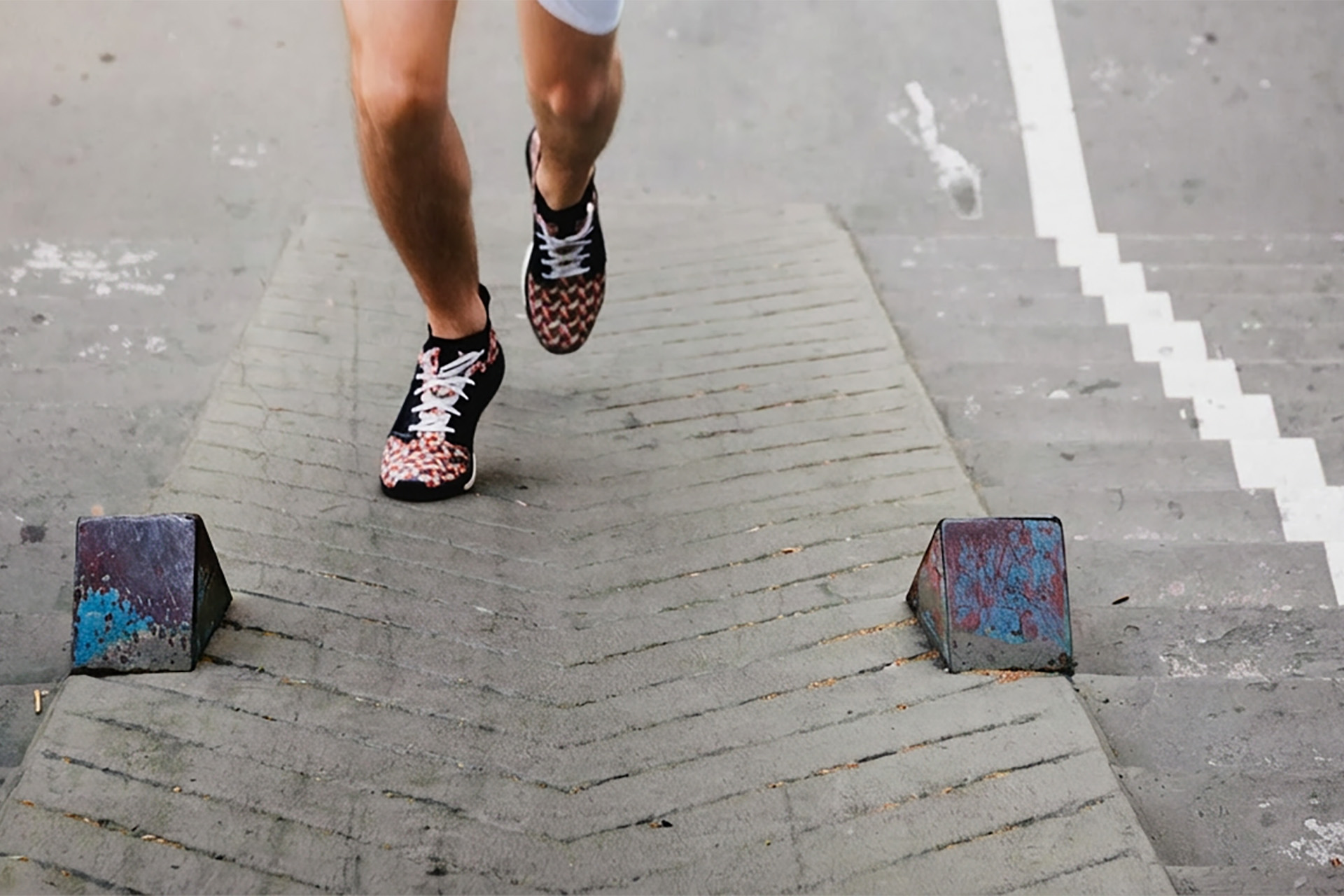
Plantar Plate Tear Diagnosis
At The Foot Practice, we start with a hands-on exam: pressing under the ball of the foot, checking toe alignment, and doing a few simple tests such as:
- Paper-pull test: A piece of paper is slid under the sore toe; if it slips out easily, the toe isn’t gripping properly.
- Vertical stress test (the ‘drawer’ test): Gently pushing the toe upwards while you relax; too much movement usually means a tear (this test is 99.8 % specific when surgery later confirms it).
- Daylight or Churchill sign: Looking for a visible gap or the toe sitting higher than its neighbours.
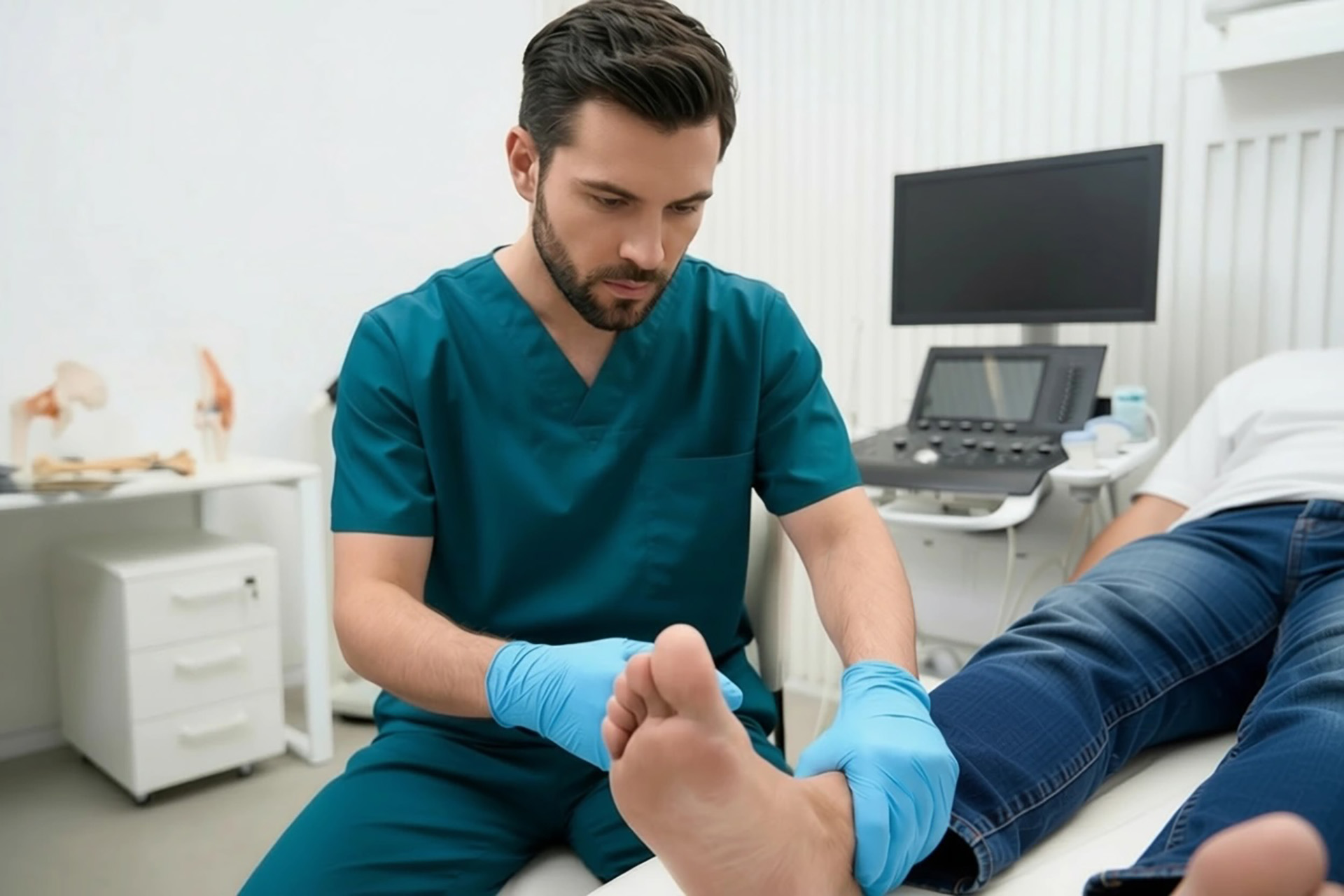
We then confirm with imaging, such as the following:
| Imaging Option | What it shows best | When we use it most | Accuracy highlights |
| Weight-bearing X-rays | Metatarsal length, joint spacing, early arthritis | First step for all cases | Rules out bone problems quickly |
| Ultrasound | Real-time view of the tear, toe movement & gapping | Early or uncertain cases – done in-clinic | 93 % sensitive, dynamic, no radiation |
| MRI | Full picture of tear size, surrounding swelling, scar tissue | Persistent pain, toe drifting, or planning surgery | 95 % sensitive, best for complex cases |
Ultrasound is usually sufficient to diagnose simple plantar plate tears, while an MRI is reserved for long-standing or complicated cases. Dynamic ultrasounds can visualise soft tissues and effectively identify the location and extent of a plantar plate tear. Either way, the combination of a good clinical exam and the proper scan gives us a clear answer so that treatment can start straight away.
Plantar Plate Tear vs Neuroma: What’s the Difference?
Plantar plate tears and neuromas differ in pain location and mechanics. A plantar plate tear produces joint instability and plantar tenderness, while a neuroma causes nerve-type pain between toes. With Morton’s neuroma, patients describe burning or electric pain between the toes, worsened by tight toe boxes.
Some patients have both, so a careful exam with targeted imaging prevents missed diagnoses. This demonstrates the value of a podiatric assessment when you’re unsure whether a plantar plate tear or a neuroma is present. Neuromas respond to metatarsal pads; tears need offloading orthoses.
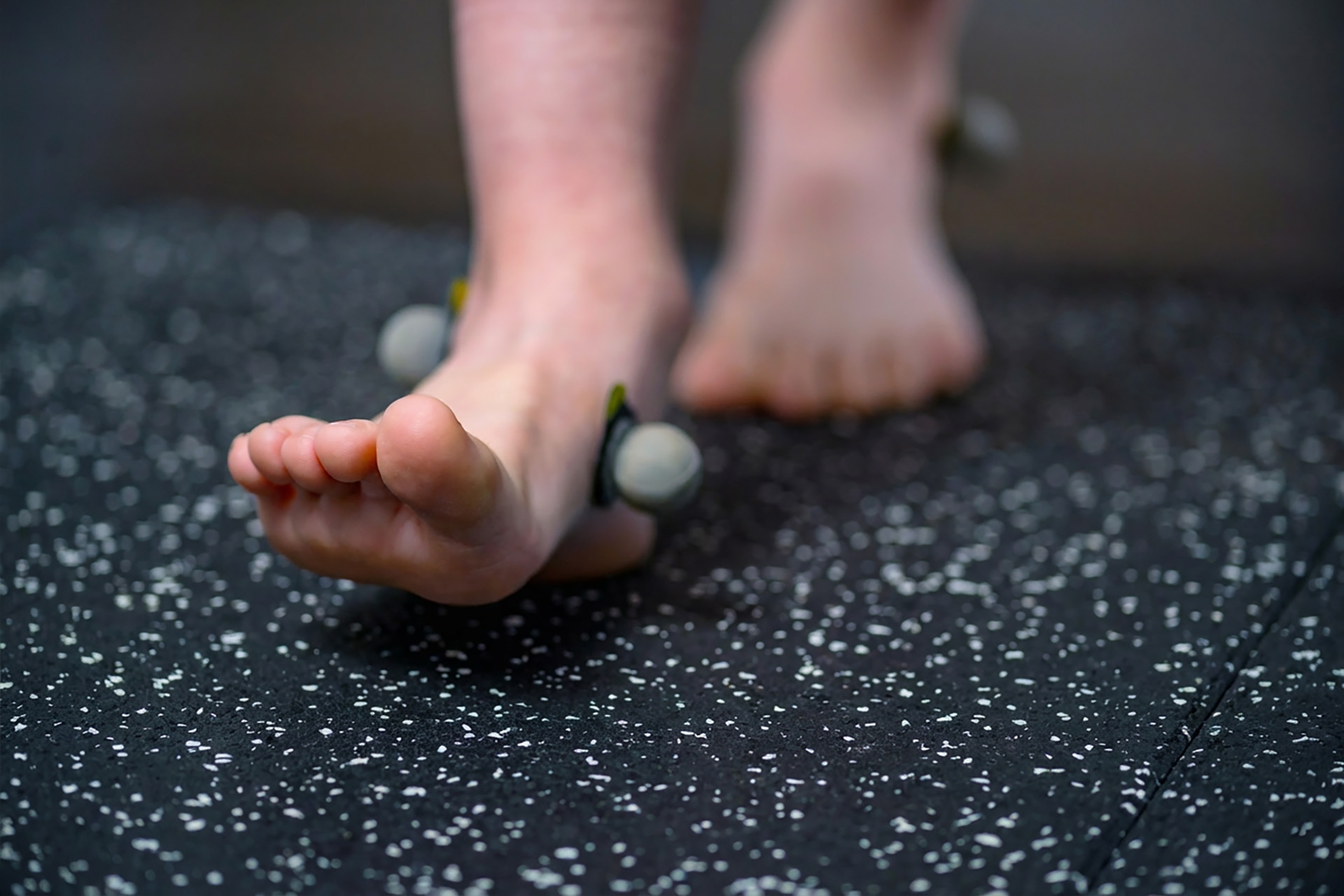
Effective Plantar Plate Tear Treatment
While many search online for ‘plantar plate tear treatment’ for home remedies, effective care begins with an individualised management plan tailored to each patient’s needs, provided by a professional.
At The Foot Practice, we prioritise non-surgical management options such as rest, taping, and orthotics to help relieve pain and protect the healing ligament. Our integrated plan relieves pain, restores stability, and addresses the mechanical factors that led to the overload in the first place.
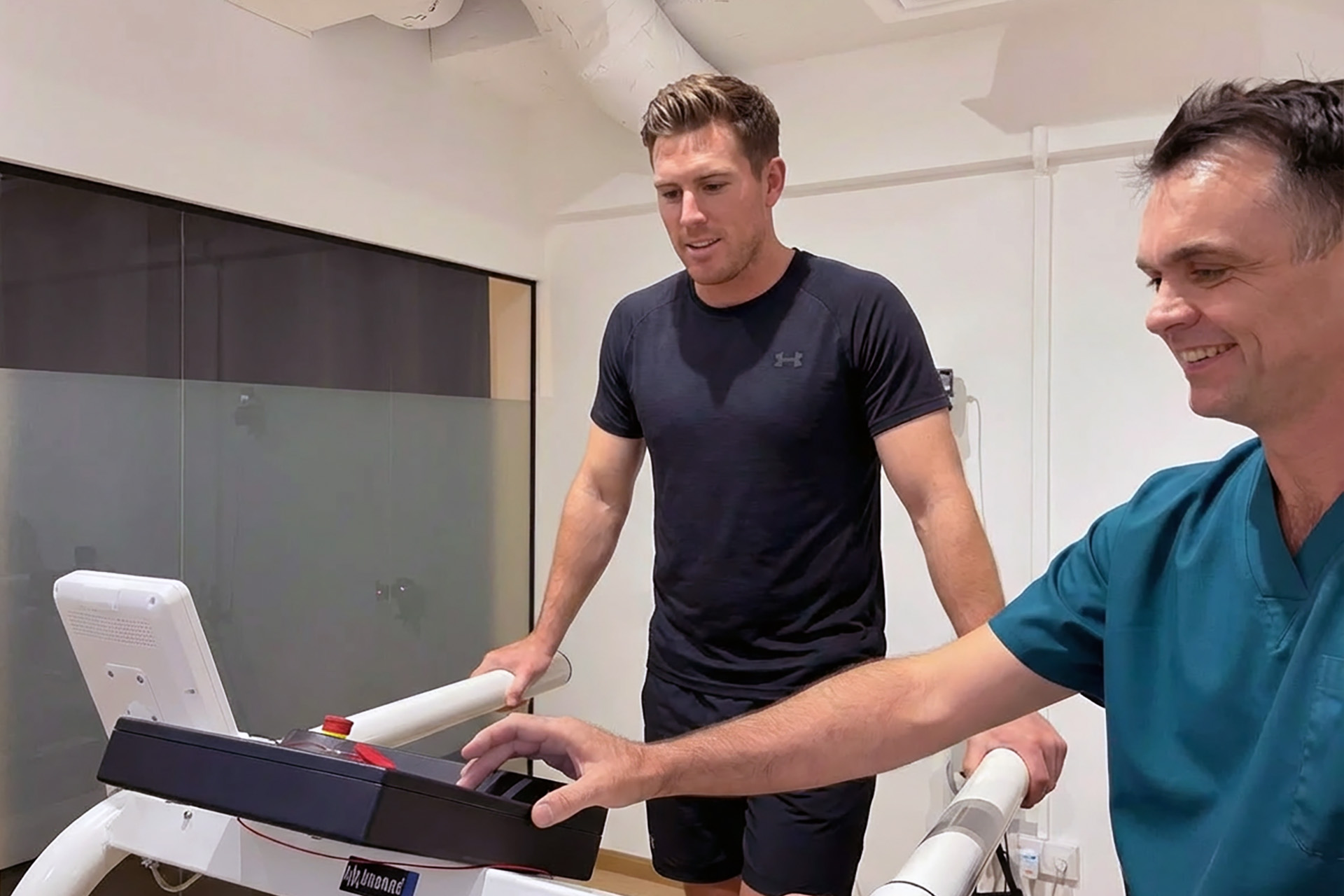
Gait Analysis and Footwear Decisions
Gait analysis and footwear decisions for a plantar plate tear prioritise reducing toe joint bend and evening out forefoot load. Our RehaWalk® pressure-sensor treadmill gait analysis maps where you load on your foot during walking and running, highlighting hotspots and excessive pressure under the metatarsal heads.
A footwear assessment then pairs you with a stiff-soled shoe, stiffer forefoot rockers, or carbon-plate options that limit painful dorsiflexion at toe-off and protect the healing structure of your foot. These tweaks can make hills and longer walks on Singapore’s tough concrete more manageable. Stiff-soled shoes or boots for at least 6 weeks offload the plate. Conservative success rates are around 80% for plantar plate tears in Grades 1 and 2.
Custom Orthoses and Targeted Offloading
Custom orthoses for a plantar plate tear redistribute pressure away from the injured plate and improve alignment during push-off. At The Foot Practice, we use metatarsal domes and cut-outs to float the sore area, with forefoot posting to temper overpronation or a long second metatarsal.
Properly fitted plantar plate tear orthotics reduce irritation while you rebuild strength. These orthoses can be adjusted as swelling subsides and activity rises.
Mobilisation Exercises and Strength
Mobilisation exercises and strength work for a plantar plate tear restore joint glide, improve toe control, and build capacity so the ligament isn’t re-overloaded during recovery. Physical therapy may be recommended to help regain strength and mobility after a plantar plate tear, especially after surgery or significant injury.
Expect a staged home plan: gentle joint mobilisation to reduce stiffness; intrinsic foot training (short-foot, toe yoga, towel curls); progressive calf and forefoot loading; and gait cues to prevent undue pressure on the sore toe. These drills importantly complement orthoses and footwear changes, not replace them.
Shockwave Therapy for Persistent Pain
Extracorporeal Shockwave Therapy (ESWT) is a non-invasive treatment option for persistent pain associated with plantar plate injuries. It can help stubborn plantar plate pain by managing symptoms and supporting tissue healing as part of a broader intervention plan.
When symptoms plateau, a short Shockwave Therapy course may be considered alongside load modification and strengthening. Your podiatrist will advise on when and whether this fits your plan and coordinate multidisciplinary care where appropriate.
Phased Return to Running and Sport
A phased return for a plantar plate tear progresses from protected walking to graded impact once hop tests and push-off are pain-free. Most patients begin with stiff-soled walking and taping, then advance to brisk walks, followed by a walk-jog progression on flat paths, while monitoring next-day soreness.
This rehabilitation typically spans several weeks, depending on the severity of the injury. Tempo and hills come later, with footwear stiffness relaxed gradually as tolerance builds.
How Long Does It Take to Recover and What to Expect?
Recovery from a plantar plate tear varies, but many improve in weeks to a few months with proper load management, orthoses and progressive exercises. Early diagnosis of plantar plate tears is key to better recovery.
Early cases may settle in 6-8 weeks. Longstanding tears with deformity take longer and sometimes need orthopaedic input. Severe cases may require longer rehab and possibly surgery due to more severe symptoms or structural damage. Importantly, clear milestones, less morning pain, improved single-leg balance, and a pain-free hop test guide progression better than a calendar.
However, you can roughly estimate that Grades 1-2 heal in 6-12 weeks (with an 80% success rate). Grades 3-4 take 3-6 months, if no surgery is required.

Can a Plantar Plate Tear Heal Without Surgery?
Many plantar plate tears can be managed conservatively, with surgery reserved for persistent pain, progressive deformity or failed non-operative management.
Surgery may involve repairing the plantar plates or realigning the metatarsal bones to restore function and relieve pressure on the ball of the foot. Your podiatrist will coordinate imaging, refer you to the appropriate specialist, and support your orthoses and footwear setup post-operatively to prevent the issue from recurring.
Recovery from surgery for a plantar plate tear typically involves a period of immobilisation in a protective boot for several weeks, followed by physical therapy.
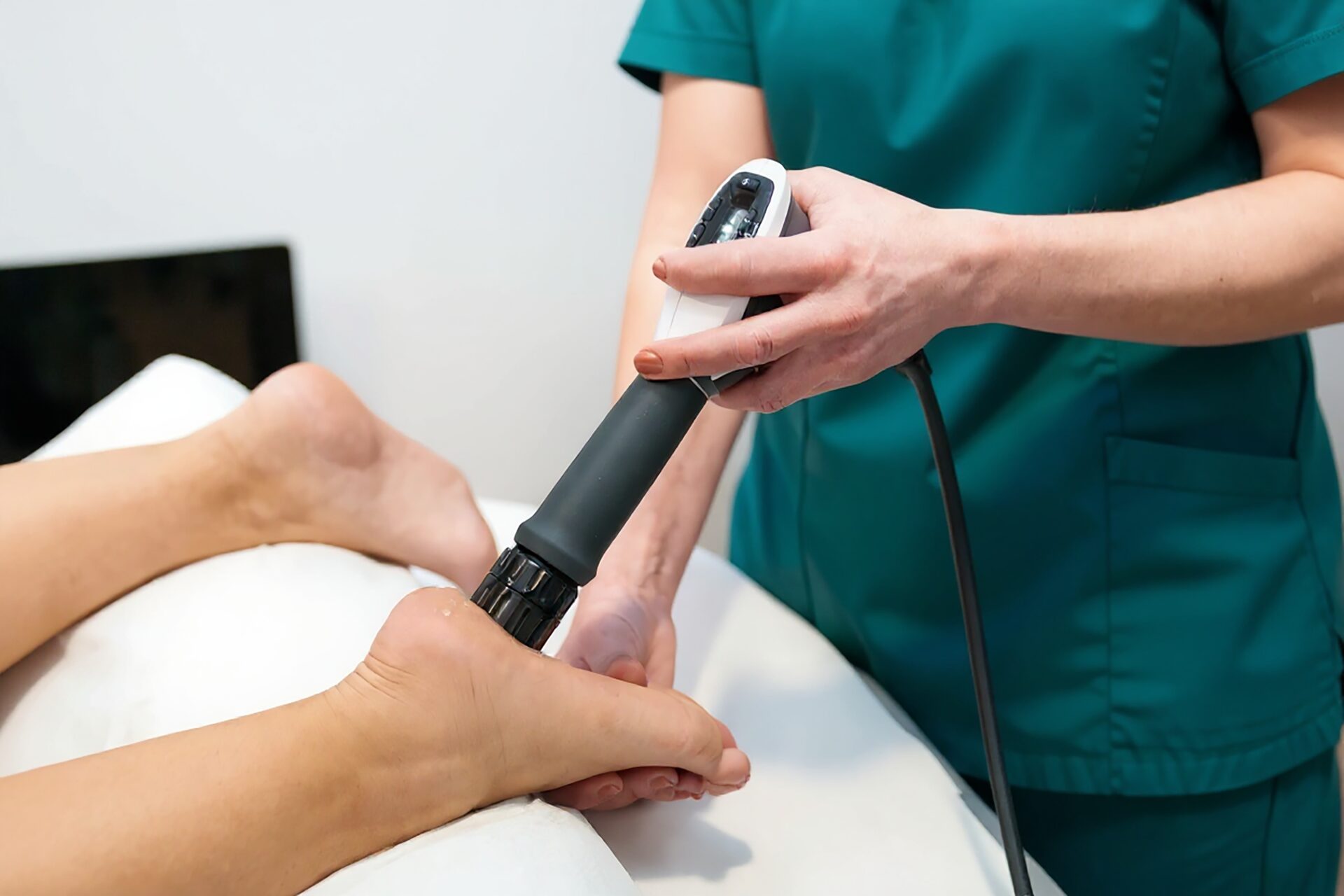
Why Choose The Foot Practice in Singapore?
The Foot Practice combines technology, clinical expertise, and personalised care to address pain and its biomechanical causes. From RehaWalk® gait analysis to footwear assessments, custom orthoses and progressive mobilisation, our multidisciplinary approach helps you move with confidence and reduce recurrence.
Whether you’re training for a marathon at Fort Canning or walking to work through the CBD with a plantar plate tear, book an appointment at our podiatry clinic on Orchard Road.


